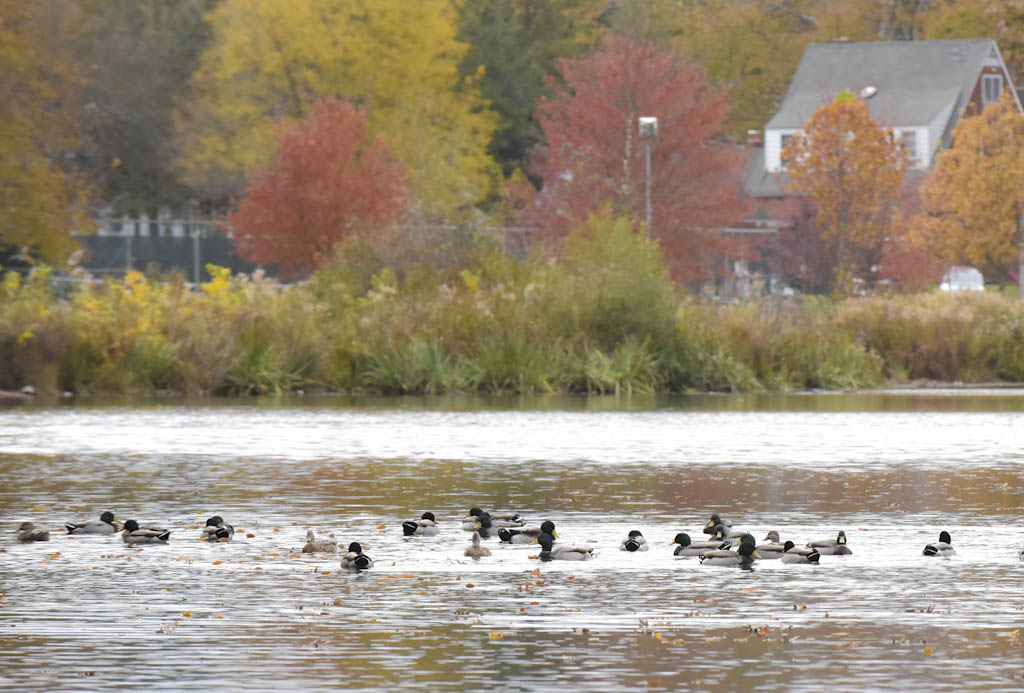Local history buffs were offered a chance recently to meet two Mercer County authors who have written books about the American Revolutionary War at an event sponsored by the Lawrence Historical Society.
William Kidder and David Price spoke to about 30 people at the book talk, which was held at the historic 18th-century Brearley House in Lawrence Township on June 23.
The event celebrated the recent publication of their books by Knox Press, which focused on the Revolutionary War from a local perspective.
Kidder, who lives in Ewing Township and who is a retired history teacher, spoke to the attendees about his book – “Crossroads of the American Revolution: Trenton 1774-1783.” It is one of several books that he has written about the Revolutionary War and its impact locally.
Price, who lives in Lawrence Township and who is a historical re-enactor at Washington Crossing State Park in Pennsylvania, spoke about this book – “The Road to Assunpink Creek.” The book, which is his second one, focuses on the Second Battle of Trenton on Jan. 2, 1777 – one of three key battles that turned the tide for the patriots.
Kidder’s book is written from the point of view of the common people who lived through the period of Dec. 25, 1776 to Jan. 2, 1777. Known as the “Ten Crucial Days,” that period of time was critical to the ultimate success of the Revolutionary War – from the First Battle of Trenton on Dec. 25, 1776 to the Battle of Princeton on Jan. 3, 1777.
Transportation and communications in the 18th century were limited, Kidder said. The residents of the other colonies learned of the events in New Jersey well after the fact. Letters between family members and friends rarely mentioned what had occurred locally and did not realize an event’s significance.
Kidder recounted the story of a Trenton girl who wrote to her mother about the day-to-day events in her life – on Jan. 2, 1777. She did not mention the fighting between the British and American troops on that date, which is known today as the Second Battle of Trenton.
In his book, Kidder relied on unusual primary sources, such as Continental Army soldiers’ requests for pensions. The applications, which are stored in the National Archives, are available online.
The Continental Army soldiers left few primary – or first-hand – accounts. Some of the information in the book comes from depositions left by fellow soldiers, Kidder said.
Price’s book focuses on the series of skirmishes between the British and American troops along the King’s Highway (Route 206) between Princeton and Trenton on Jan. 2, 1777, and the Second Battle of Trenton later that day.
Col. Edward Hand and his band of Pennsylvania riflemen held off the British and Hessian troops from reaching Trenton until nightfall. Additional American troops under Gen. George Washington’s command had stationed themselves on one side of the Assunpink Creek in Trenton.
Once the British and Hessian troops arrived in Trenton near dusk, they tried several times to cross the narrow bridge over the Assunpink Creek. The American troops beat them back each time.
Lord Cornwallis, who commanded the British and Hessian troops, called off his troops in anticipation of resuming the battle the next day.
Meanwhile, Gen. Washington left behind several hundred troops and marched the rest of his army toward Princeton overnight between Jan. 2 and Jan. 3, 1777, culminating in the American victory at the Battle of Princeton.
In his book, Price points out that the Battle of Assunpink Creek – more commonly known as the Second Battle of Trenton – is the most underappreciated moment in the American Revolutionary War. If the Americans had been defeated, it would likely have meant the end of the rebellion.

